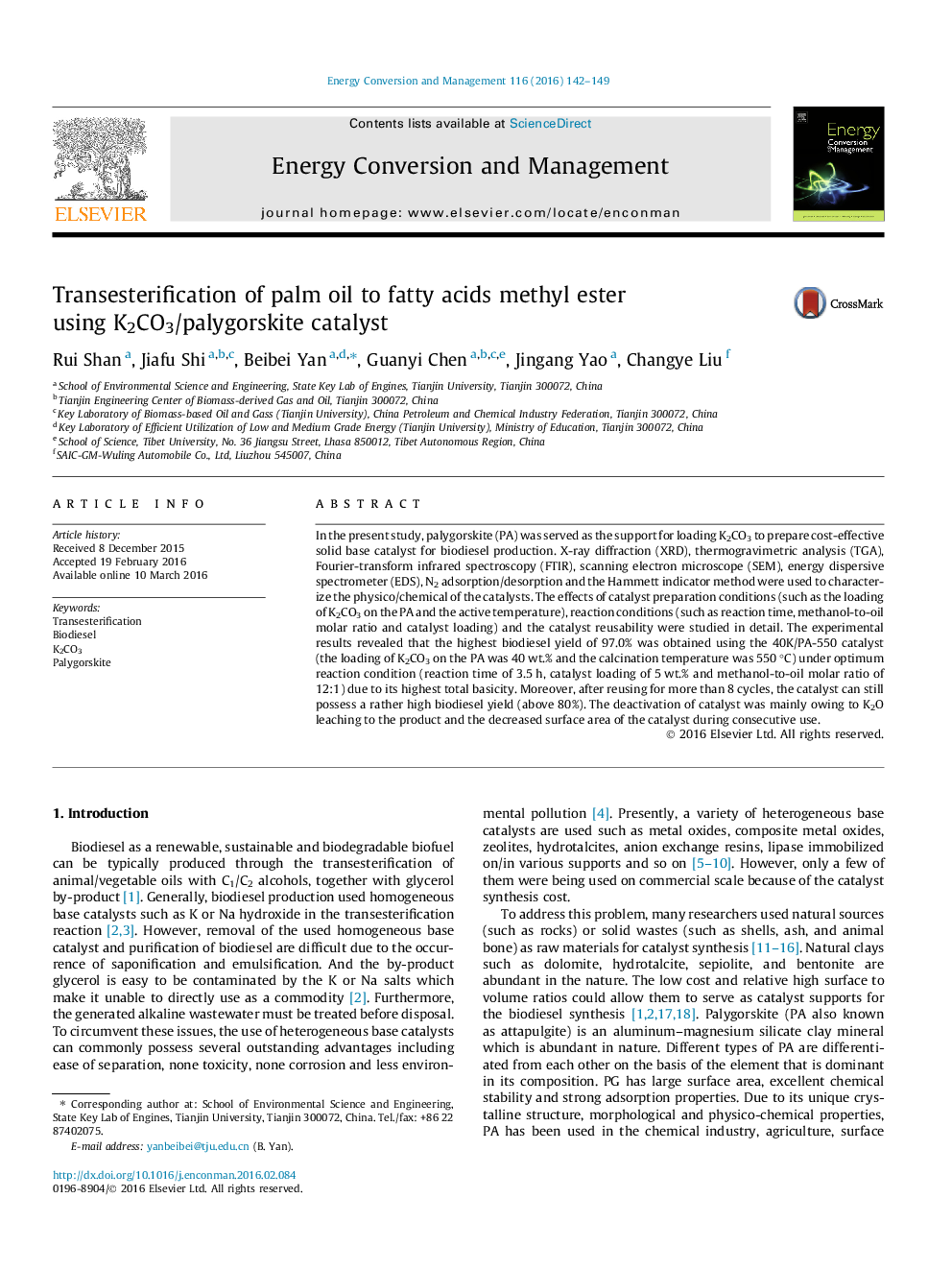| کد مقاله | کد نشریه | سال انتشار | مقاله انگلیسی | نسخه تمام متن |
|---|---|---|---|---|
| 760238 | 1462846 | 2016 | 8 صفحه PDF | دانلود رایگان |
• Palygorskite was used as a catalyst support for the transesterification reaction.
• The K2CO3-supported palygorskite catalysts exhibited good catalytic performance.
• The high biodiesel yield obtained was owing to the high basicity of catalyst.
• The main contributions to the basicity of catalyst were K2O and Al–O–K groups.
• A little deactivation of catalyst was mainly due to the leaching of K+ ions.
In the present study, palygorskite (PA) was served as the support for loading K2CO3 to prepare cost-effective solid base catalyst for biodiesel production. X-ray diffraction (XRD), thermogravimetric analysis (TGA), Fourier-transform infrared spectroscopy (FTIR), scanning electron microscope (SEM), energy dispersive spectrometer (EDS), N2 adsorption/desorption and the Hammett indicator method were used to characterize the physico/chemical of the catalysts. The effects of catalyst preparation conditions (such as the loading of K2CO3 on the PA and the active temperature), reaction conditions (such as reaction time, methanol-to-oil molar ratio and catalyst loading) and the catalyst reusability were studied in detail. The experimental results revealed that the highest biodiesel yield of 97.0% was obtained using the 40K/PA-550 catalyst (the loading of K2CO3 on the PA was 40 wt.% and the calcination temperature was 550 °C) under optimum reaction condition (reaction time of 3.5 h, catalyst loading of 5 wt.% and methanol-to-oil molar ratio of 12:1) due to its highest total basicity. Moreover, after reusing for more than 8 cycles, the catalyst can still possess a rather high biodiesel yield (above 80%). The deactivation of catalyst was mainly owing to K2O leaching to the product and the decreased surface area of the catalyst during consecutive use.
Journal: Energy Conversion and Management - Volume 116, 15 May 2016, Pages 142–149
